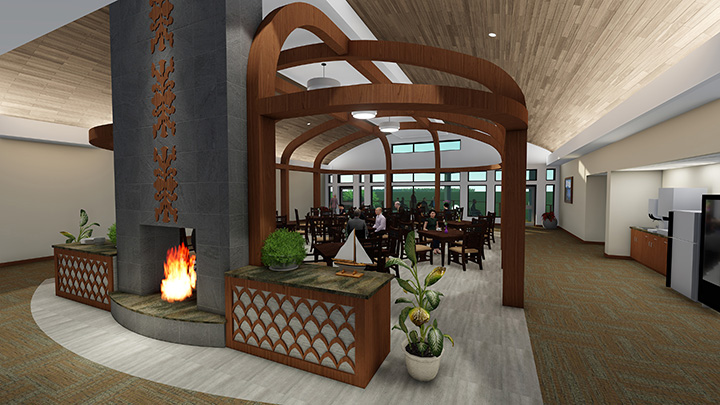Environments for Aging brings together national leaders working to develop ideas that improve the living environments for an aging population. In three days, attendees network, learn and share latest innovations and best practices in senior friendly design for long-term and residential care settings.
Architect Randy Wagner of DSGW had the opportunity to present with, Ron Ross of Native American Health Management and Susan Pourier, Administrator of the Oglala Sioux Lakota Nursing Home in Whiteclay, Nebraska on Strategies to build skilled care facilities in Tribal communities.
Nationwide, many Tribal areas lack skilled care nursing facilities managed by and for their own communities. As of today, there are 18 established tribally operated nursing home facilities located in the United States. Of these facilities, most have a bed capacity at or under 50 beds.1 Therefore, when elders require a higher level of care, they are often forced to move away to the nearest town with a support facility. This results in the elder having to live in an unfamiliar place that typically does not reflect or celebrate the traditions of Native American heritage.
Elders play a key role in Native American culture. They pass on the history of the Tribe through storytelling, teach the younger generation native language, and play important roles in ceremonies to keep their culture alive. It’s not only important for the Tribe to have them stay within the community, but it’s also important to design a skilled care facility to help support their role within the community.
When developing a skilled care facility in Indian Country, there are many key factors to consider:
- Tribal Economic Models and Reimbursement
For Tribes to operate a nursing home facility independently often times a partnership with Indian Health Services (I.H.S.) is created. Reimbursement for skilled nursing homes is facilitated through Centers for Medicare & Medicaid Services (CMS). CMS rates skilled care nursing homes on a scales of 1 to 5 stars based on health inspection, staffing and quality measures. As of March 2016, there were 16 tribally owned nursing home facilities with 11 of them averaging a 2 star or lower overall rating.1
- Framework for the Architectural Design Process

The common dining room in the Winnebago Nursing Home showcases an arched timber structure above the dining area to symbolize one of the original Native American gathering structures called the “long house”. It is important to weave tribal culture and history into every phase of the planning, design and programming process of a nursing home facility. To do this, the entire process centers on building trust and listening to the Tribe. This results in truly understanding the uniqueness of the Tribe’s heritage. When designing the Winnebago Nursing Home in Nebraska some functional differences that influenced the design were developed to focus on family and cultural integration. These features include a change in resident room size and layout, ceremonial spaces and a kitchen for traditional foods.
- Celebration of Native American Traditions

Oglala Sioux Lakota nursing home residents participate in a traditional drum ceremony. Cultural traditions of Native American heritage often take place through activities. For example, residents of the recently completed Oglala Sioux Lakota Nursing Home in Whiteclay, Nebraska celebrate cultural traditions by speaking the native language, preparing traditional food such as fry bread, and participating in drum ceremonies.
Designing living environments for Native American elders presents many opportunities to incorporate design features, building materials and traditional activities that celebrate heritage and give comfort and a sense of home.
1 CMS LTSS Research: Nursing Home Facility Inventory March 2016
